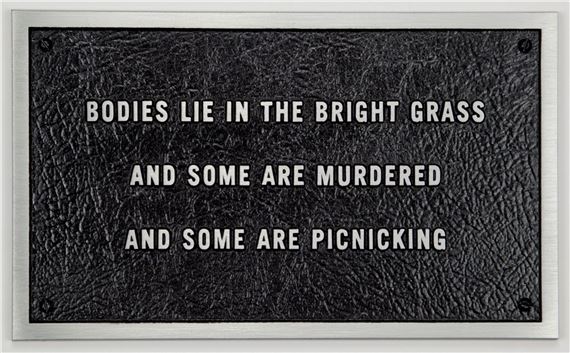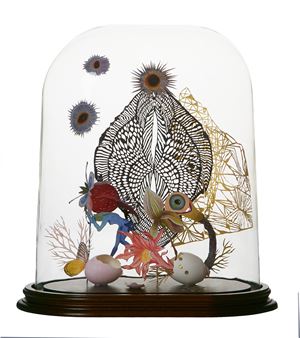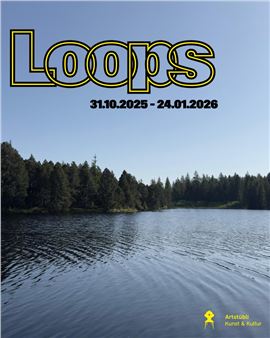New Constellations: Artworks from the Collection
Art does more than reflect its time; it asks questions that cut across eras. This exhibition brings together works from the sixteenth century to today, drawn from the collections of the Kunstmuseum Basel and the Emanuel Hoffmann Foundation. They share a focus on the darker sides of our existence: war and conflict, violence and destruction, and, ultimately, transience. Andreas Slominski’s (b. 1959) central, monumental installation functions as a conceptual crux. Its interplay of allure, threat, containment, and control shaped the thinking behind the room’s transhistorical selection of artworks.
Hans Holbein the Younger (1497/98–1543), for example, uses symbolically charged motifs such as skulls to refer to the inevitability of death. Lotti Krauss (1912–1985) and Niklaus Stoecklin (1896–1982) respond to the devastation of World War I at Hartmannsweilerkopf, a rocky spur in France’s Vosges mountains, with stark depictions of war-scarred nature, which becomes a surrogate for human suffering. Kara Walker (b. 1969) draws on historical sources to create a shadow play marked by depictions of violence. Her storytelling reveals how deeply racism and sexism are woven into the social fabric.
This presentation opens a space where discomfort, vulnerability, and violence are made visible—not to resolve anything, but to invite reflection on how we respond to the past, to others, and to what we would likely rather not see.

Recommended for you
Art does more than reflect its time; it asks questions that cut across eras. This exhibition brings together works from the sixteenth century to today, drawn from the collections of the Kunstmuseum Basel and the Emanuel Hoffmann Foundation. They share a focus on the darker sides of our existence: war and conflict, violence and destruction, and, ultimately, transience. Andreas Slominski’s (b. 1959) central, monumental installation functions as a conceptual crux. Its interplay of allure, threat, containment, and control shaped the thinking behind the room’s transhistorical selection of artworks.
Hans Holbein the Younger (1497/98–1543), for example, uses symbolically charged motifs such as skulls to refer to the inevitability of death. Lotti Krauss (1912–1985) and Niklaus Stoecklin (1896–1982) respond to the devastation of World War I at Hartmannsweilerkopf, a rocky spur in France’s Vosges mountains, with stark depictions of war-scarred nature, which becomes a surrogate for human suffering. Kara Walker (b. 1969) draws on historical sources to create a shadow play marked by depictions of violence. Her storytelling reveals how deeply racism and sexism are woven into the social fabric.
This presentation opens a space where discomfort, vulnerability, and violence are made visible—not to resolve anything, but to invite reflection on how we respond to the past, to others, and to what we would likely rather not see.
Artists on show
Contact details


 ARTISTS
ARTISTS














